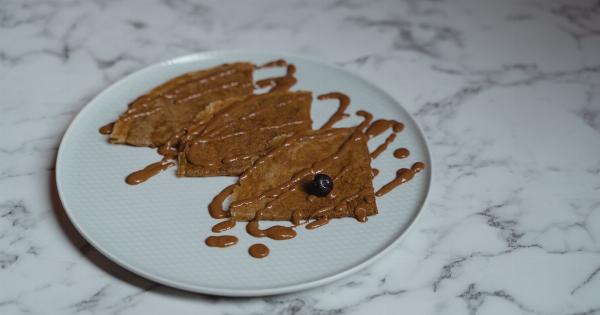Peanut allergy is the most common food allergy, affecting millions of people worldwide. It is an immune response to peanut proteins, causing symptoms ranging from mild hives to anaphylaxis.
The current treatment is to avoid peanuts and carry an epinephrine auto-injector in case of an accidental exposure. However, recent research has shown promising results in developing a cure for peanut allergy. This article explores the possibility of the end of peanut allergy by 2020.
Understanding Peanut Allergy
A peanut allergy occurs when the immune system mistakenly identifies peanut proteins as harmful and produces an allergic response. Peanut allergy symptoms can range from mild to severe and can occur within seconds to hours after exposure to peanuts.
Symptoms may include:.
- Hives or rash
- Itchy or tingling mouth
- Swelling of lips, tongue, or throat
- Difficulty breathing
- Nausea, vomiting, or diarrhea
- Anaphylaxis (a severe, life-threatening reaction)
Currently, there is no cure for peanut allergy, and the only treatment is avoidance and carrying an epinephrine auto-injector in case of accidental exposure.
The Rise of Peanut Allergy
Peanut allergy has become prevalent worldwide. It is estimated to affect 1-2% of the population in the United States, United Kingdom, and Australia.
The incidence of peanut allergy has increased in recent years, leading researchers to study the reasons behind this rise.
One theory is that early introduction of peanut products to infants could prevent the development of peanut allergy.
The Learning Early About Peanut (LEAP) study, published in 2015, found that early introduction of peanut products to infants at high risk of peanut allergy reduced the incidence of peanut allergy by 81%.
Another theory is the hygiene hypothesis, which suggests that decreased exposure to microbes in early childhood could result in a higher incidence of allergic diseases.
This theory is supported by studies showing a higher incidence of peanut allergy in affluent, urban areas compared to rural areas.
The Search for a Cure
Recent research has shown promising results in developing a cure for peanut allergy.
One approach is oral immunotherapy, where patients consume small amounts of peanuts and gradually increase the dose over time, desensitizing the immune system to peanut proteins. A recent trial of oral immunotherapy found that 67% of participants were able to tolerate the equivalent of two peanuts after two years of treatment.
Another approach is epicutaneous immunotherapy, where patients wear a patch containing peanut proteins that gradually increase in dose.
A recent trial of epicutaneous immunotherapy found that 58% of young patients were able to tolerate the equivalent of one peanut after one year of treatment.
Other approaches being studied include sublingual immunotherapy, where patients receive peanut proteins under the tongue, and injection immunotherapy, where patients receive peanut proteins via injections.
The Road to a Cure
While the results of these trials are promising, there are still challenges to overcome before a cure for peanut allergy can be widely available. One challenge is the risk of adverse reactions during immunotherapy, including anaphylaxis.
Patients undergoing immunotherapy must be closely monitored in a clinical setting.
Another challenge is the long-term efficacy of immunotherapy. Some patients may experience a relapse of symptoms after stopping immunotherapy.
Regulatory approval is also needed before a cure for peanut allergy can be marketed. The US Food and Drug Administration (FDA) recently approved oral immunotherapy for peanut allergy, but it is still only available in limited clinical settings.
The Future of Peanut Allergy
The end of peanut allergy by 2020 may be a lofty goal, but recent research has shown that a cure for peanut allergy is within reach.
With continued progress in immunotherapy research and regulatory approval, a cure for peanut allergy may become widely available in the near future.
However, it is important to remember that even with a cure for peanut allergy, prevention is still key.
The LEAP study showed that early introduction of peanut products to infants at high risk of peanut allergy can prevent the development of peanut allergy. It is essential to continue educating parents, caregivers, and healthcare providers on the importance of early introduction of peanut products.
As we move towards a world without peanut allergy, we must also remember to support and advocate for those who have already been diagnosed with peanut allergy.
It is crucial to create a safe and inclusive environment where those with peanut allergy can live without fear of exposure.



























